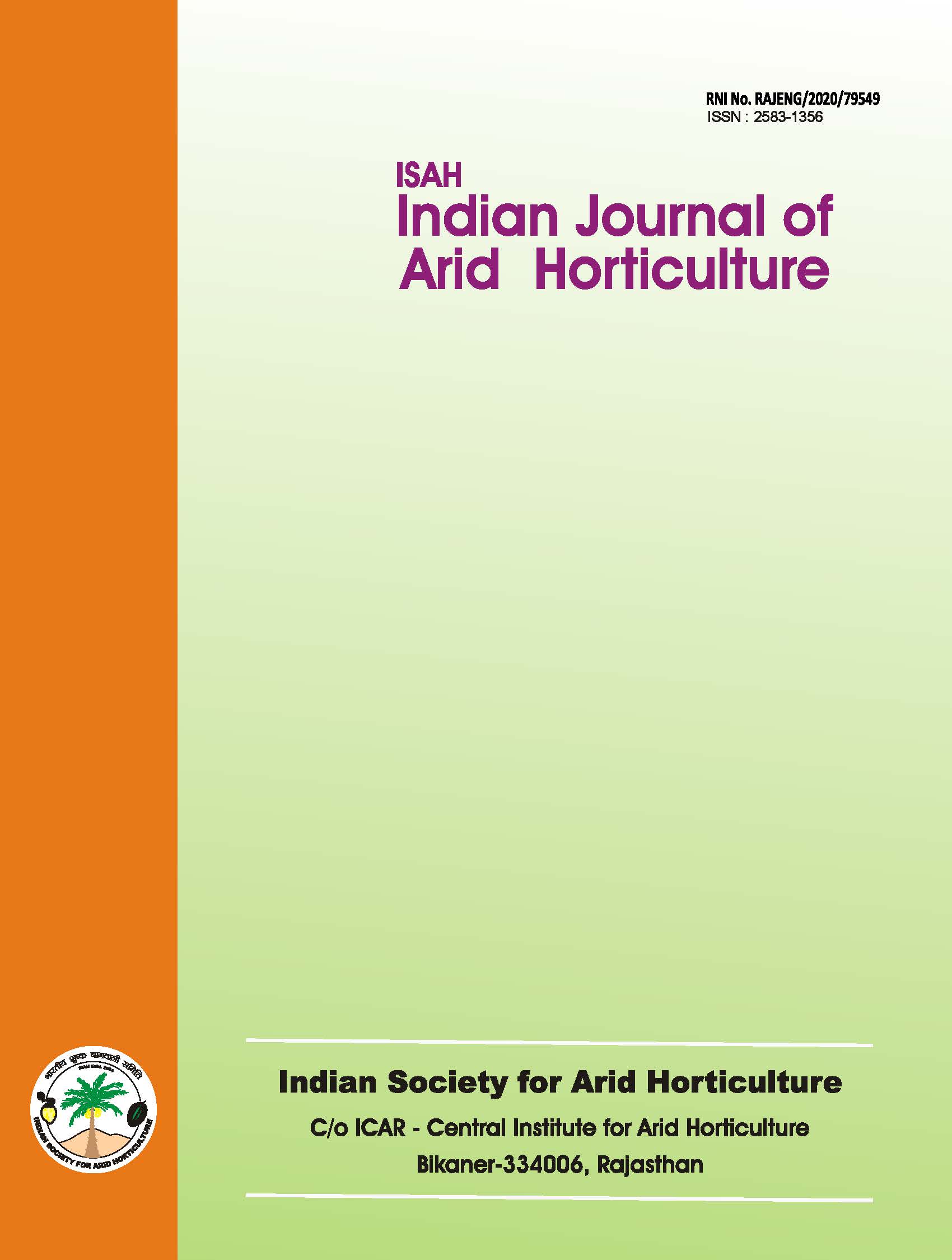Standardization of Processing Techniques for Karonda (Carissa carandas) Products for Commercial Utilization
Keywords:
methodology, KarondaAbstract
Karonda (Carissa carandas L.) is an underutilized indigenous fruit crop of India, well adapted to arid and semi-arid regions. Due to its astringent taste, it is not widely consumed as a dessert fruit, yet it is a rich source of essential vitamins and minerals. The ripe fruit possesses antioxidant properties and has been reported to be beneficial in treating diseases such as bilious disorders (Watt, 1972) and intestinal ailments (Vasni, 1986).Karonda has immense potential for processing into value-added products such as preserves, jam, candy, juices, and pickles (Chandra & Jindal, 2001). However, a significant portion of the harvest is lost due to seasonal glut, leading to reduced market prices and wastage, with post-harvest losses ranging from 30-40%. The fruit’s high acidity makes it less popular for direct consumption, emphasizing the need for value addition to enhance its commercial utilization (Parvathi & Anby, 1997).Given the perishable nature of karonda, its preservation and conversion into processed products with extended shelf life is crucial. Despit its economic potential, limited research has been conducted on the standardization of processing techniques for karonda-based products. This study aims to develop and standardize techniques for producing candy, squash, jelly, and jam with improved storage stability and consumer acceptability.Downloads
References
Ashraf, S.M. (1987). Studies on post-harvest technology of Jamun (Syzygium cumini Skeels) fruit. Ph.D. Thesis, N.D. University of Agriculture and Technology, Faizabad (U.P.).
Chandra, A., & Jindal, P.C. (2001). Sustainable fruit production in arid regions for export. Current Agriculture, 25(1/2), 13-16.
Deen, B. (1992). Studies on screening of aonla (Emblica officinalis Gaertn.) genotypes for processing. M.Sc. Thesis, N.D. University of Agriculture and Technology, Faizabad (U.P.).
Kumar, S. (1990). Studies on post-harvest technology of papaya (Carica papaya L.) fruits. Ph.D. Thesis, N.D. University of Agriculture and Technology, Faizabad (U.P.).
Parvathi, S., & Anby, S. (1997). Karonda delicious. Indian Horticulture, 42(1), 11-13.
Speiser, R.M., Copley, J., & Nutting, G.C. (1947). Effect of molecular association and charge distribution on the gelation of pectin. Journal of Physical and Colloid Chemistry, 51, 47.
Vasu, N. (1986). Encyclopedia India. Vol. IV, B.R. Publishing Corporation, Delhi.
Waskar, D.P., & Khurdiya, D.S. (1987). Processing and storage of 'Phalsa' beverages. Indian Food Packer, 41(5), 7-16.
Watt, G. (1972). A Dictionary of the Economic Products of India. Vol. II, Cosmo Publications, New Delhi.

